TRAC Monthly Report: January 2024
- Category: Monthly Reports
- Author: JM
- Published: 02 Feb 2024
- Last updated: 03 Feb 2024
Planets
Jupiter
09 Jan 2024 and 10 Jan 2024: Jupiter was bright and positioned high in the sky. We were able to clearly observe its four largest moons and the planet's two prominent reddish-brown equatorial belts.
15 Jan 2024: We aimed to see Jupiter's Great Red Spot (GRS), but weren't able to spot it this time. It should be within reach of our 5" telescope at a high magnification. The hunt for the GRS continues!
18 Jan 2024: We took some photos of the Moon–Jupiter conjunction, which made for a beautiful celestial pairing in the night sky.
Saturn
09 Jan 2024: We observed Saturn at 17:30 as it was beginning to set. Low-level cloud and a brisk north-east wind meant the image was very shaky.
26 Jan 2024: We saw Saturn emerge during twilight at 17:15. It appeared very low in the sky to the south-west, visible just above the rooftops. This will likely have been the last time we'll see Saturn until late summer.
Uranus
10 Jan 2024: We made our first attempt at locating Uranus (mag. +5.7), but very sadly, we were unable to spot it. Cloud cover was partly the cause of our failure, but we also realised that we hadn't developed a clear strategy for pinpointing its position. We'll need to be better prepared next time!
Neptune
15 Jan 2024: Neptune (mag. +7.9) was positioned directly above the Moon (mag. -11.2). We briefly searched for Neptune, but the Moon's intense brightness made it challenging. We concluded that its glare would likely obscure any traces of the distant planet.
Moon–Jupiter Conjunction
18 Jan 2024: The Moon was positioned close to Jupiter all evening.
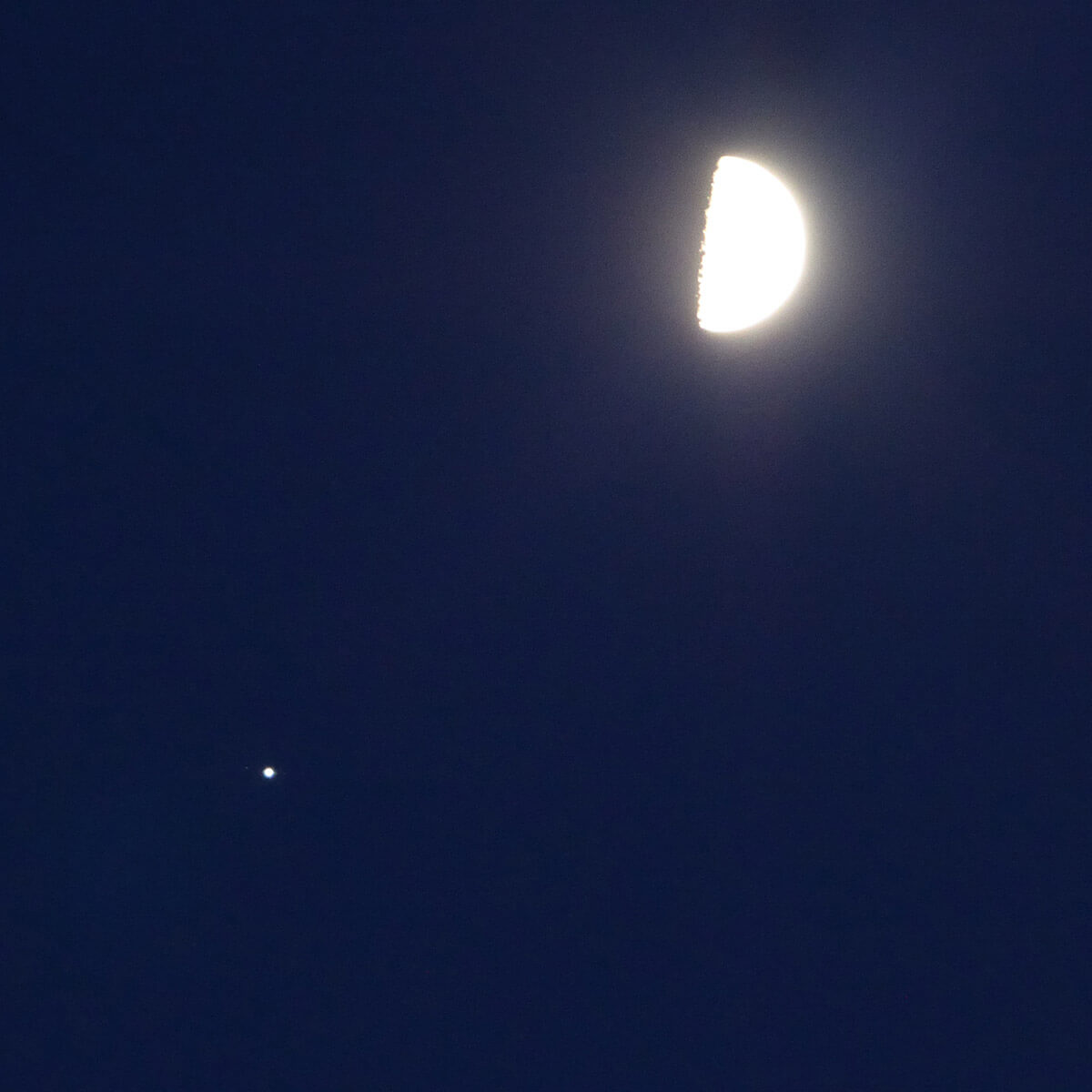
Image credit: JM/TRAC
Above image: Jupiter is the bright object to the lower left of the Moon. It wasn't possible to capture any detail due to the contrast between the Moon's dazzling brightness and the faint light of Jupiter against the dark blue twilight sky.
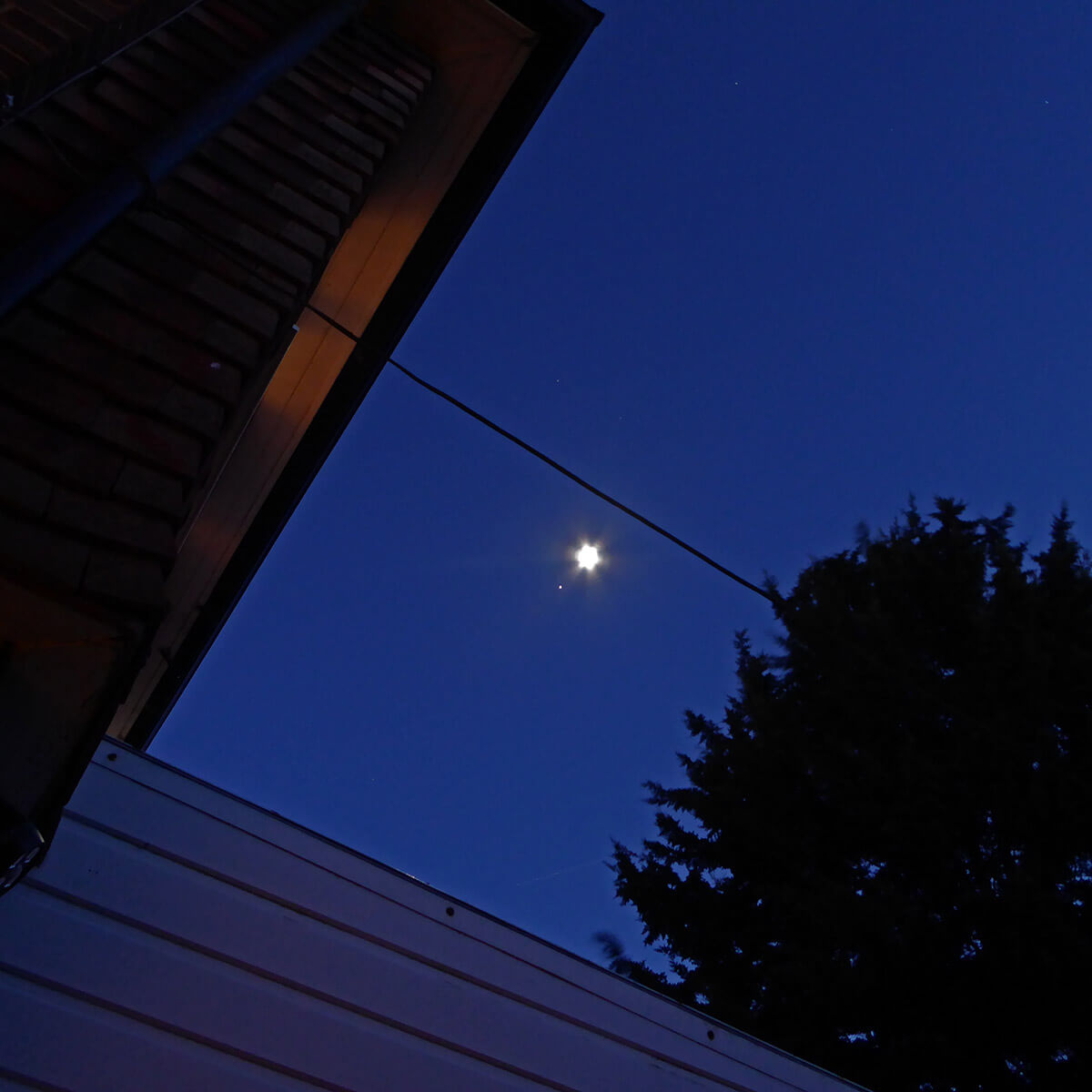
Image credit: JM/TRAC
Above image: A naked-eye view of the conjunction. This gives you a sense of how the conjunction appeared to the unaided eye.
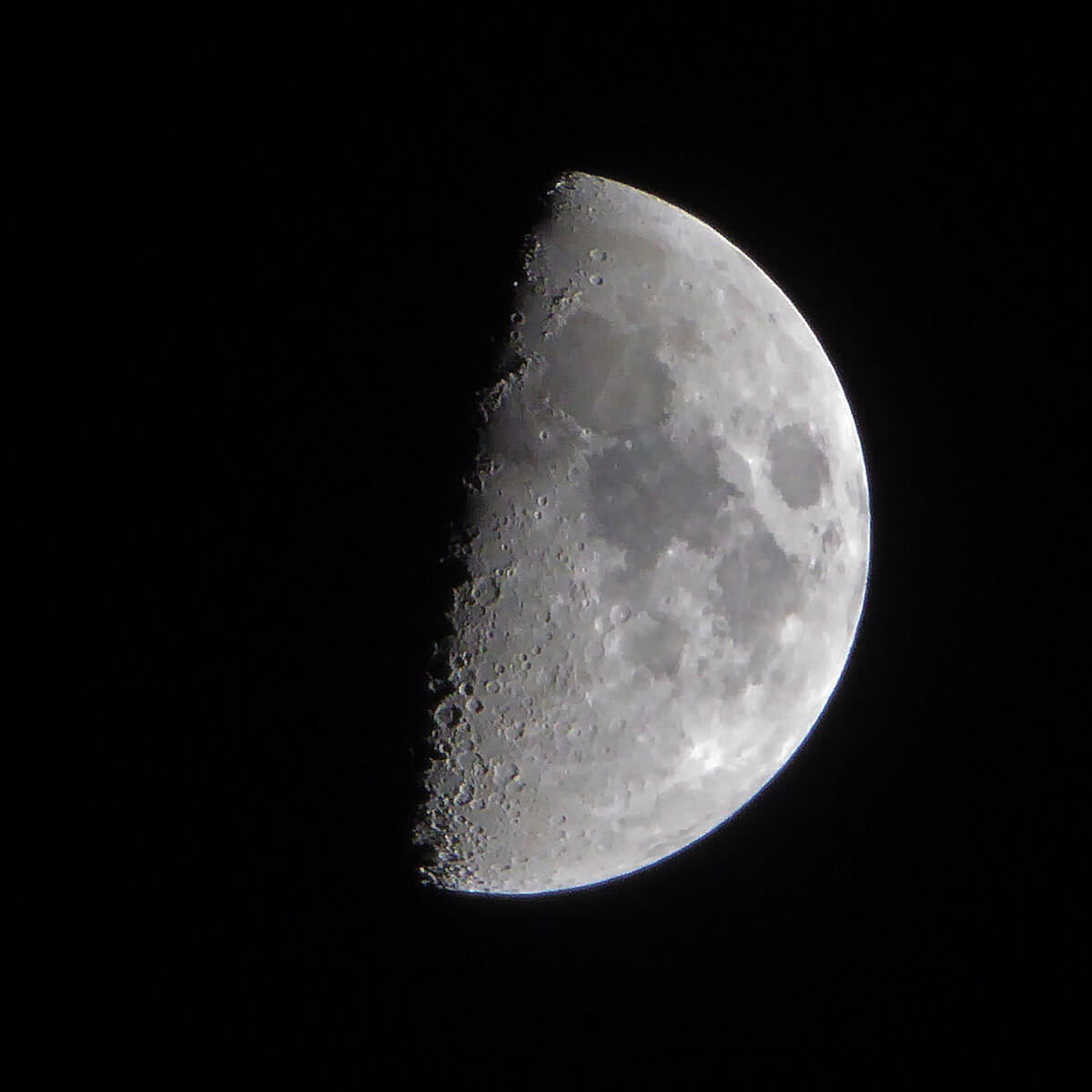
Image credit: JM/TRAC
Above image: The Moon had just passed its first quarter phase, with 57% of its surface brilliantly illuminated. It was the perfect moment to observe the hundreds of craters near its south pole, offering a stunning view of this area of rugged terrain.
The Moon: South Pole
Craters Near the South Pole
After admiring the Jupiter–Moon conjunction on 18 Jan 2024, we took advantage of the excellent sky conditions to closely examine the craters near the Moon's south pole.
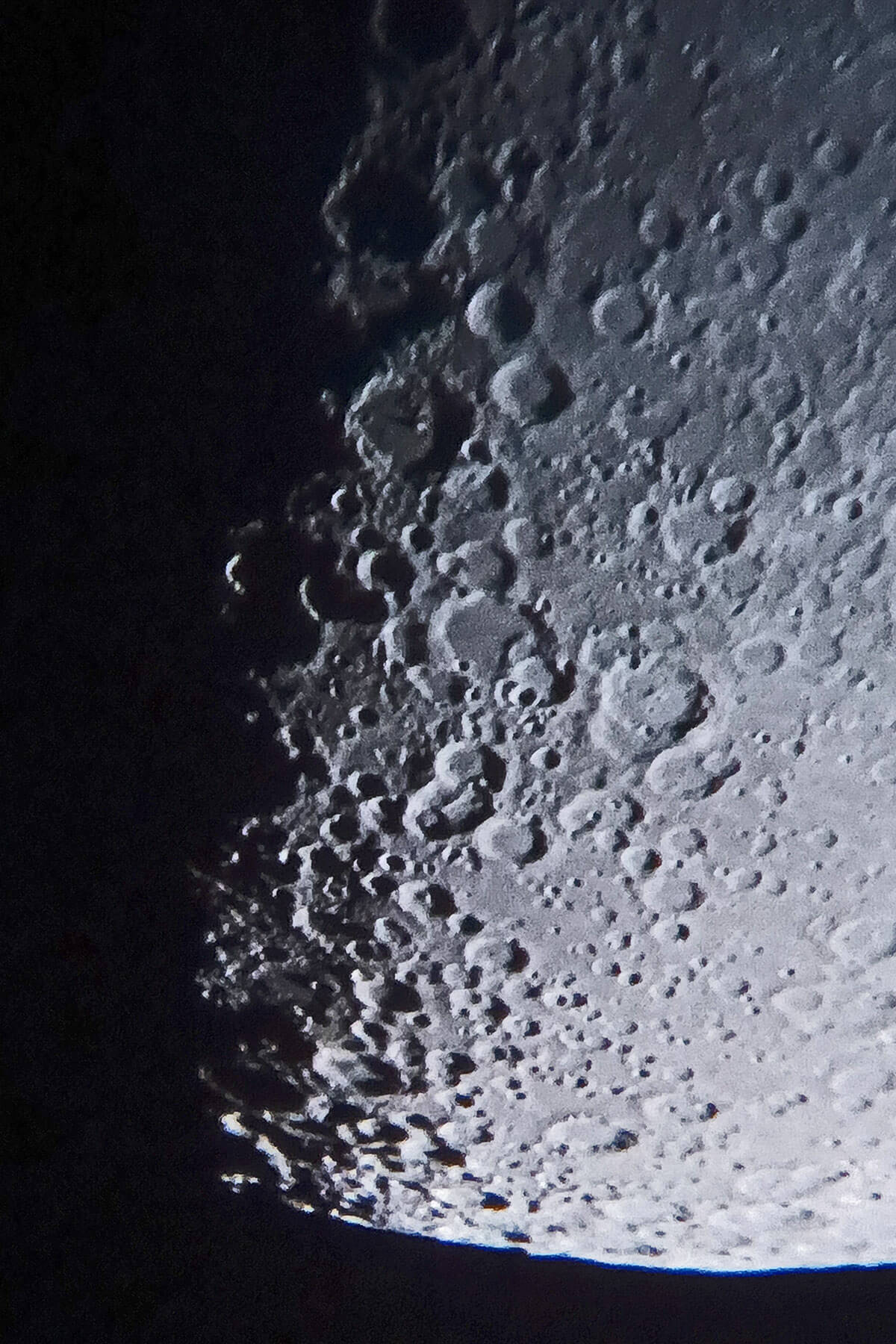
Image credit: JM/TRAC
Above photo: With the help of a good Moon map, it's possible to identify several prominent lunar craters in this photo, including Stofer and Faraday; Maurolycus; Barocius; Mutus and Manzinus; and, further north, Walter, Nonius, Aliacensis, and Werner.
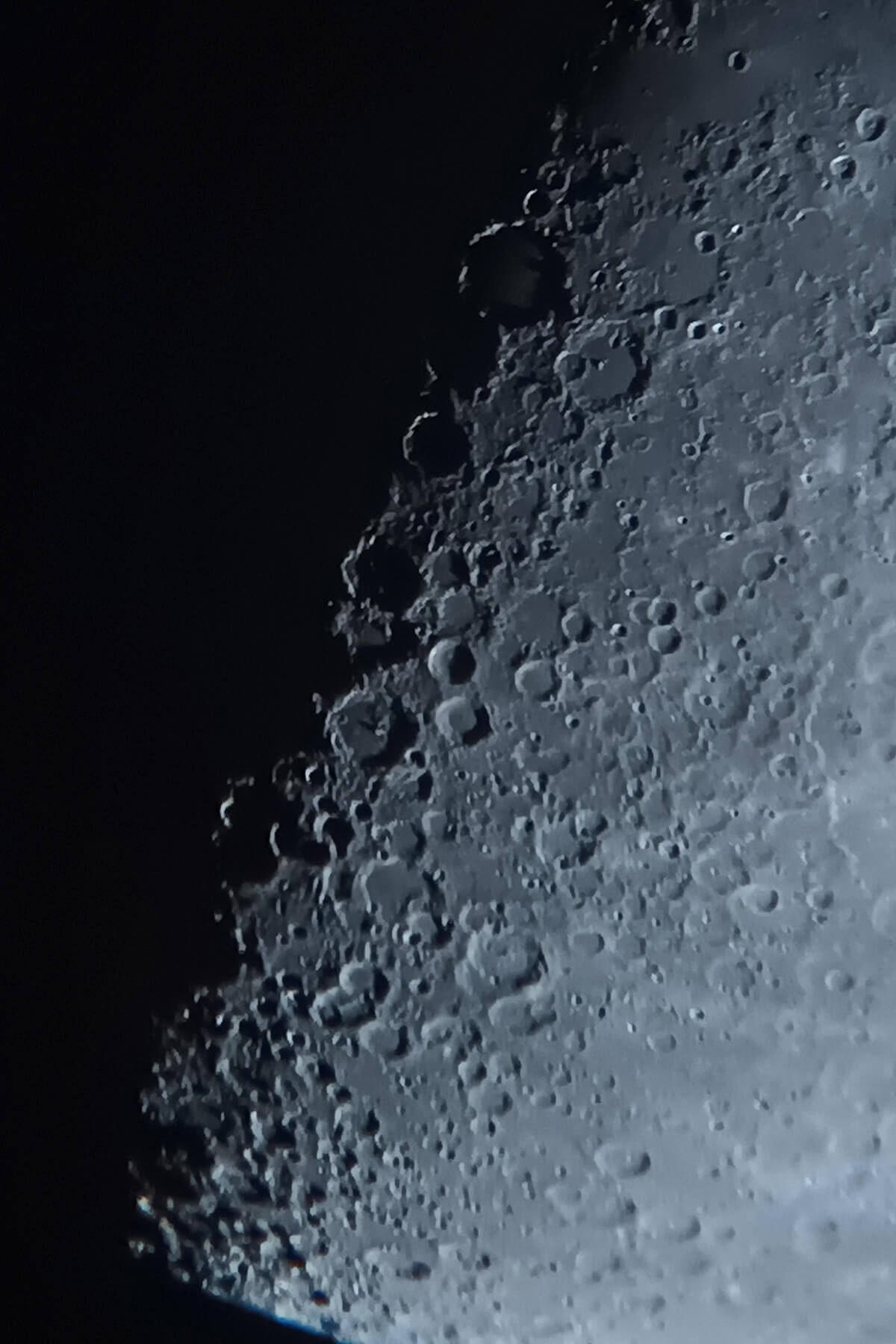
Image credit: JM/TRAC
Above photo: This wider shot of the Moon’s south pole region also reveals the same craters, along with Albategnius, Klein, Halley, Hind, Hipparchus, Horrocks, Pickering, Ptolemaeus, Herschel, and a section of the small lunar mare, Sinus Medii ("Middle Bay").
External Links
There's currently growing interest in the region around the Moon’s south pole:
The Moon: Eastern Maria
Volcanic Features on the Moon
18 Jan 2024: Next, we turned our attention to the vast maria on the eastern side of the Moon. These large, dark, flat plains were formed by ancient volcanic activity.
The term "maria" comes from the Latin word for "seas" because early astronomers mistakenly thought they were large bodies of water. These features are mostly found on the side of the Moon that faces Earth.
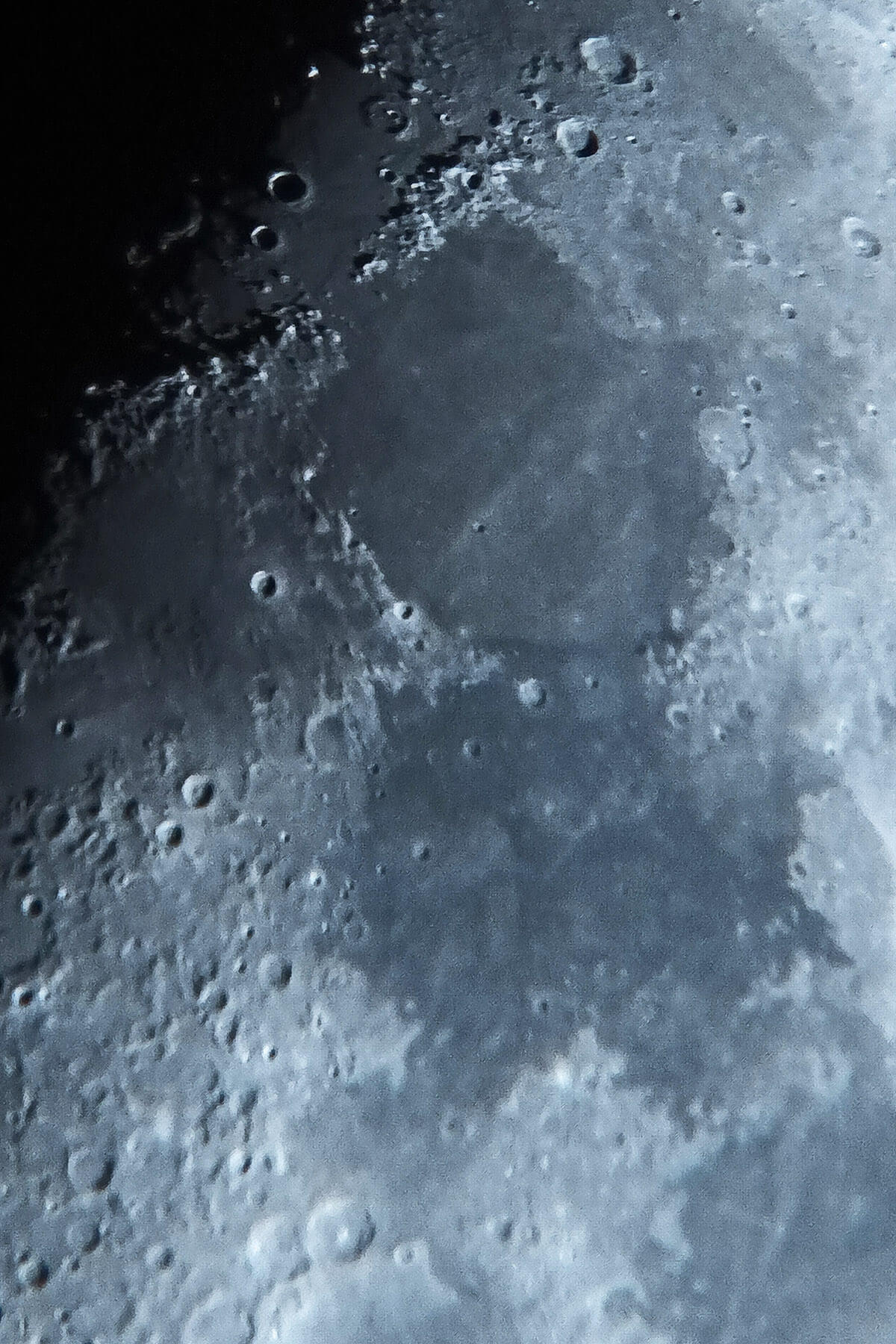
Image credit: JM/TRAC
Starting at the top of the image, craters Aristoteles and Eudoxus can be seen above Mare Serenitatis ("Sea of Serenity"). The large, flat crater at the eastern edge is Posidonius, and its close neighbour Chacornac is located just below it.
Three rugged mountain ranges are clearly identifiable:
- Montes Caucasus (named after the Caucasus Mountains)
- Montes Apenninus (named after the Apennine Mountains)
- Montes Haemus (named after the Balkan Mountains)
Near the centre of Mare Serenitatis lies the crater Bessel. On the border with Mare Tranquillitatis ("Sea of Tranquillity"), we come to craters Plinius and Vetruvius.
To the lower left, the top of Mare Fecunditatis ("Sea of Fecundity") is partially visible. To its left, the distinctive craters Theophilus and Cyrillus lie just above Mare Nectaris ("Sea of Nectar").
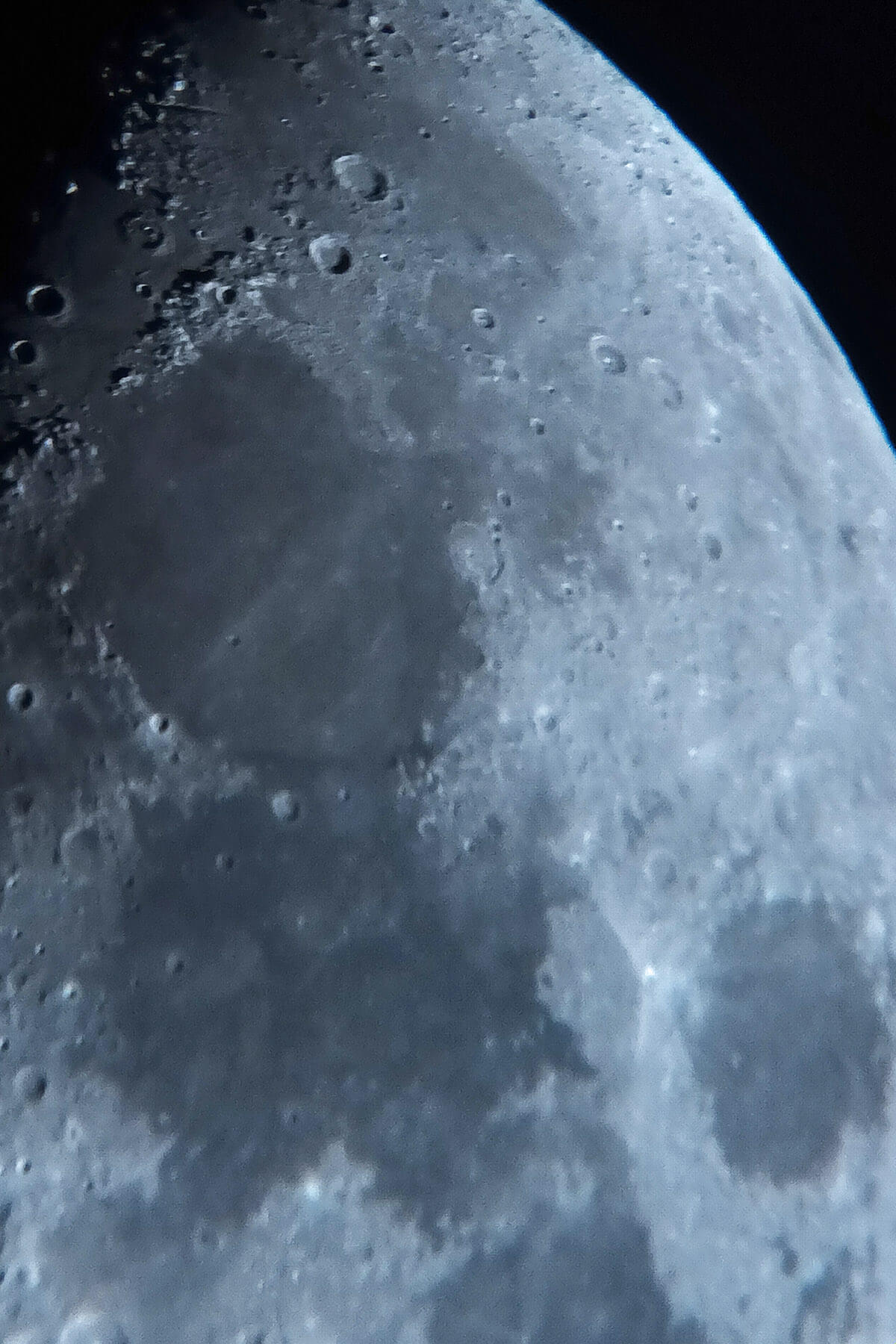
Image credit: JM/TRAC
The bright crater located between Mare Tranquillitatis and Mare Crisium ("Sea of Crises") is Proclus.
Other prominent craters visible in the image include Lycell, Picard, Macrobius, Tisserand, Romer, Hercules, and Endymion.
The Next Night
19 Jan 2024: Tonight, the skies were clear once again! It's not often we get two consecutive nights with perfect weather for moongazing!
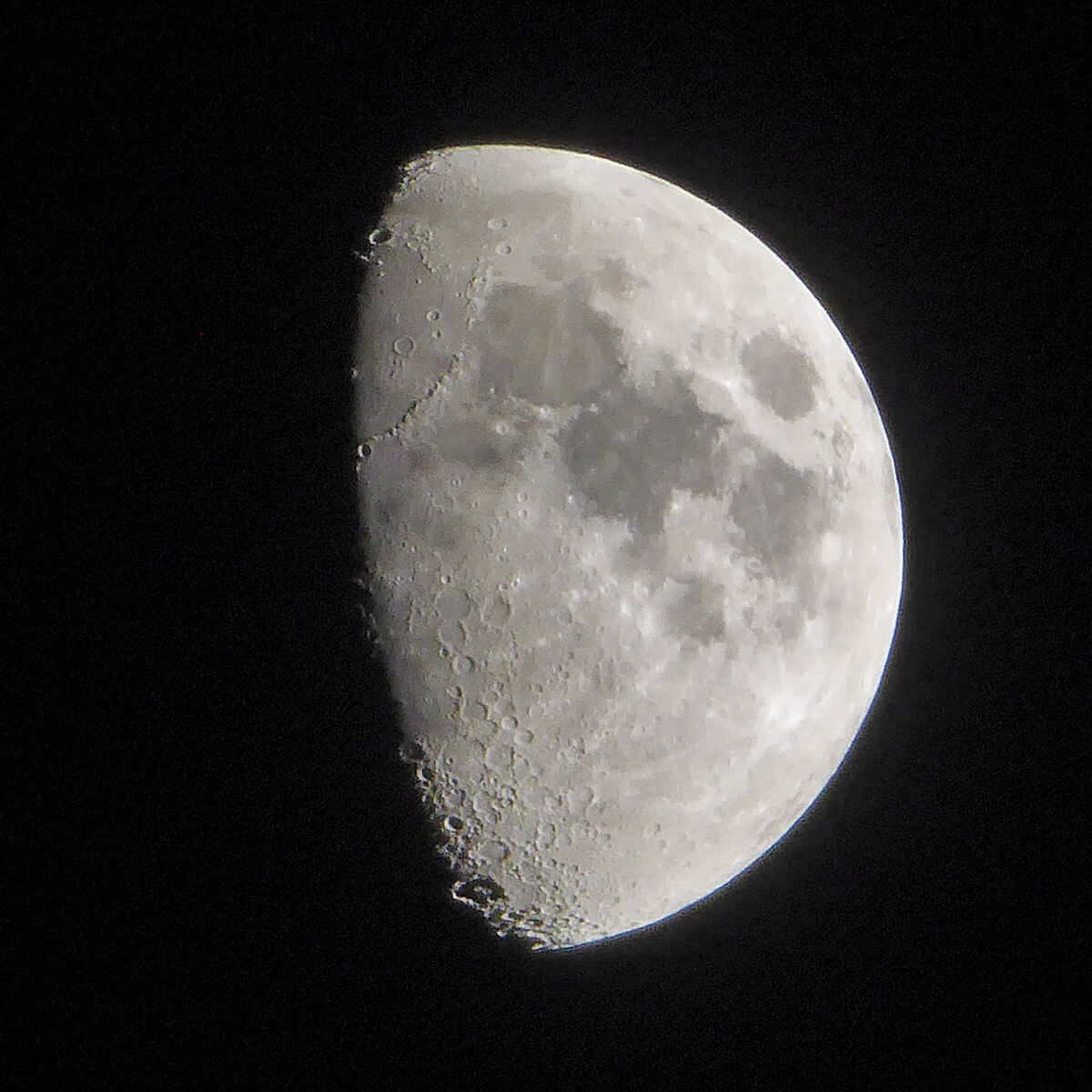
Image credit: JM/TRAC
Above photo: A larger portion of the Moon's surface was illuminated.
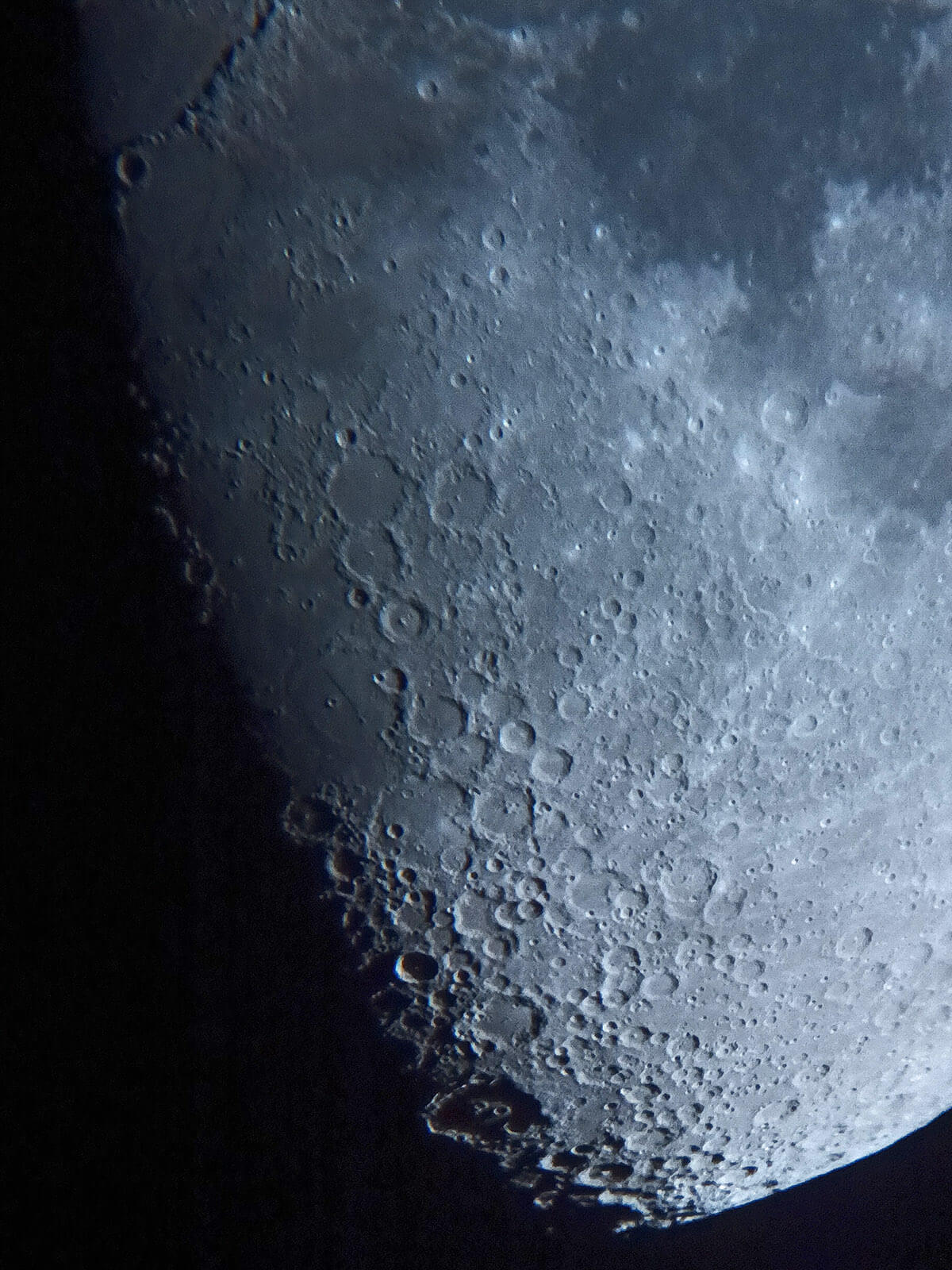
Image credit: JM/TRAC
Above photo: The large crater covered in shadow (centre bottom) is Clavius, the second largest crater on the Moon's near side.
Due to its enormous size, Clavius is visible to the naked eye from Earth. As seen in this photo, it appears as a prominent "bump" along the terminator line, typically one or two days after the Moon reaches its first quarter phase.
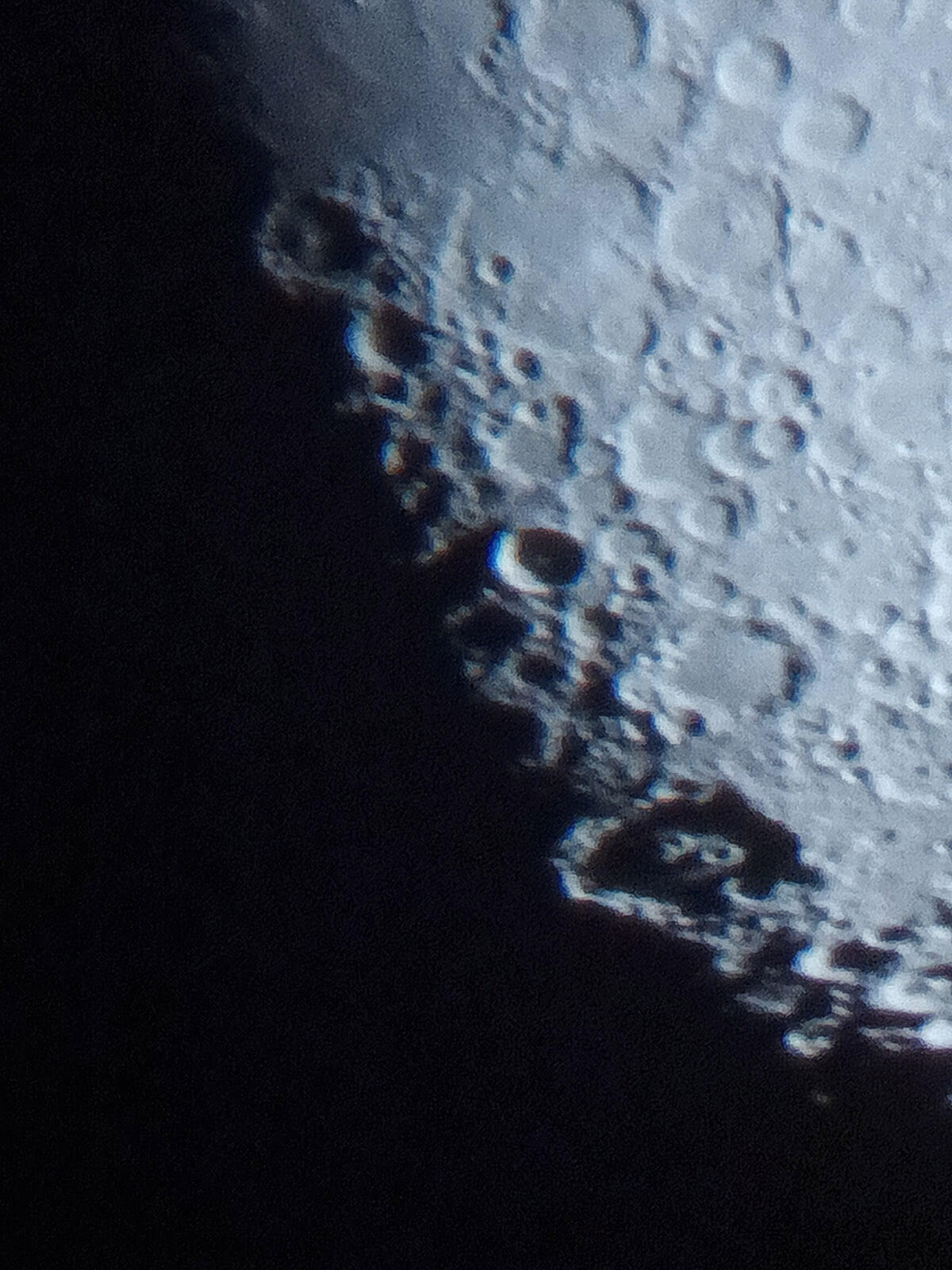
Image credit: JM/TRAC
Above photo: An enlarged (though blurred) view of Clavius showing its famous "craters within a crater". Tycho is also visible. Due to its outline being sharply defined, it resembles a satellite dish pointed straight towards the viewer.
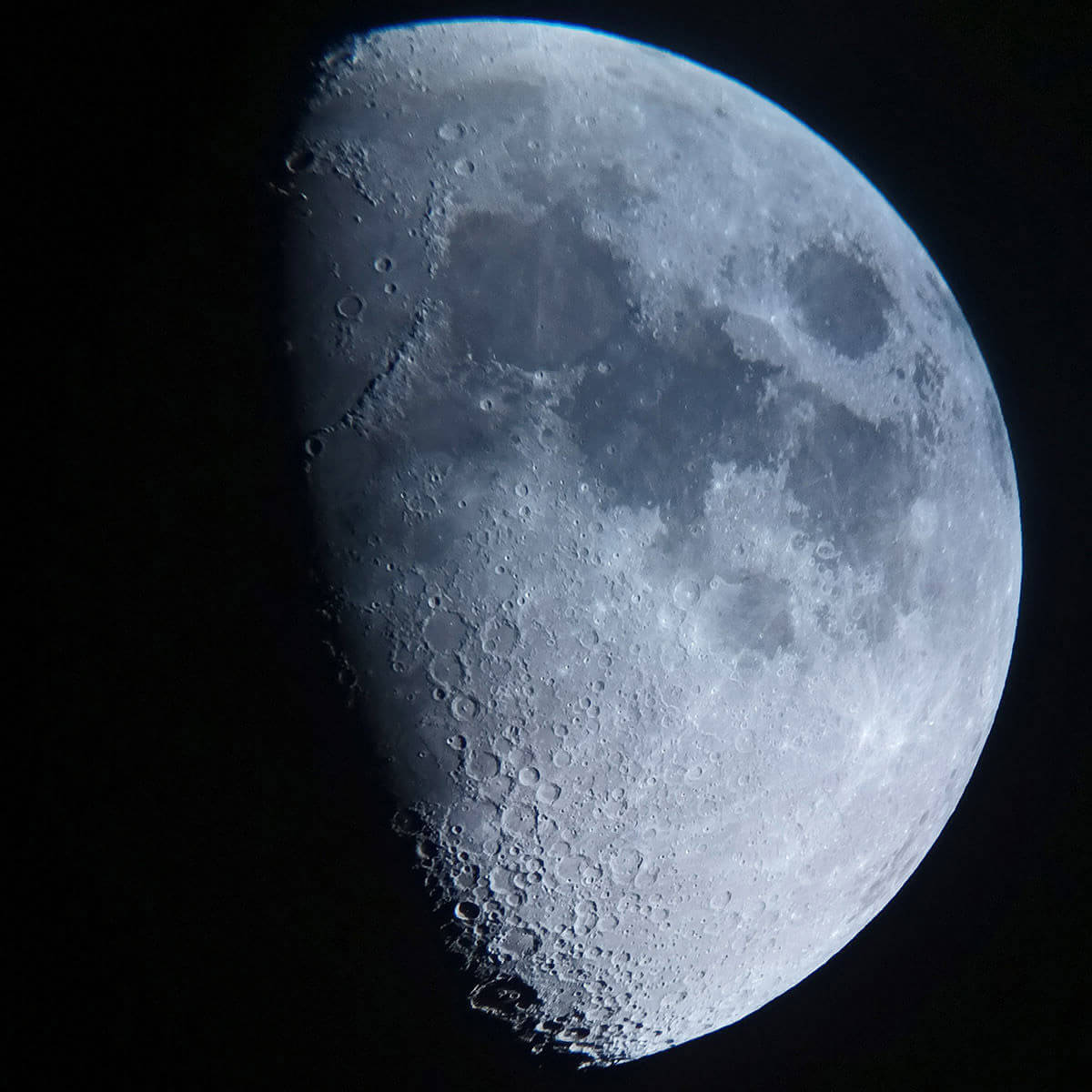
Image credit: JM/TRAC
By comparing the images from 18 Jan and 19 Jan, you can see how the illuminated portion of the Moon's surface changes from day 7 to day 8 of the lunar cycle.
January's Full Moon
Photos of the Wolf Moon
26 Jan 2024: We had an exceptionally clear view of the Full Moon, and the conditions could not have been better! With cloud cover at only 5%, the crisp night sky offered the perfect setting for our lunar observations.
We set out to photograph the Moon, experimenting with the camera's settings and modes through trial and error.
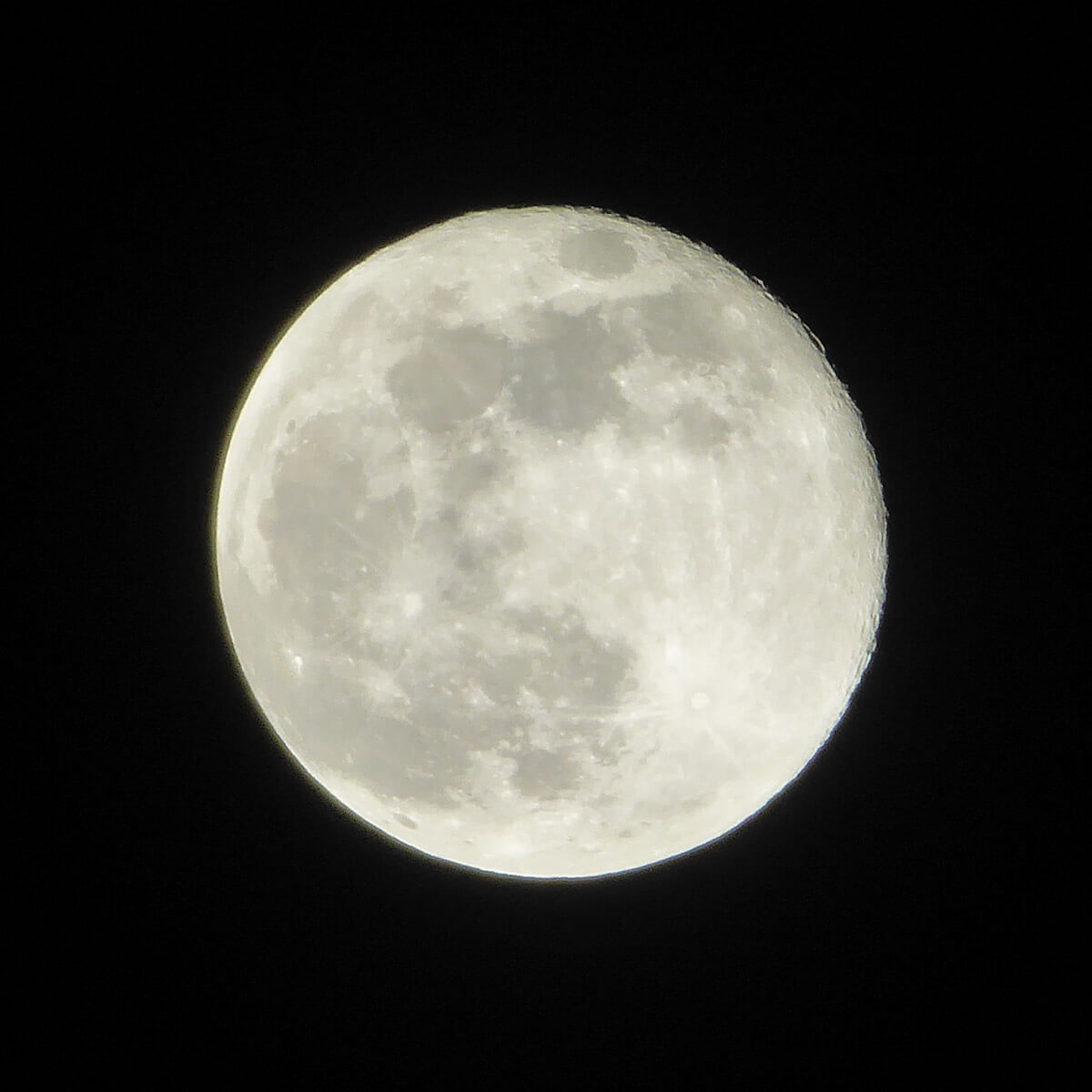
Image credit: JM/TRAC
The photo above was taken with a standard "point-and-shoot" camera featuring a powerful 30x optical zoom. It was mounted on a tripod for stability.
Using the phone adapter, we captured some fantastic photos of the Full Moon through the telescope, revealing its cratered surface in impressive detail.
![Jan 2024 Full Moon (60x Magnification) [Natural] - 26 Jan 2024](/static/images/photos/obs/2024_01_26_Full_Moon_Phone_Flip_Corrected_B12_SCALED.jpg)
Image credit: JM/TRAC
Highlights, shadows, contrast, and brightness levels have been tweaked using Google Snapseed to reveal slightly more detail of the Moon's major surface features.
![Jan 2024 Full Moon (60x Magnification) [Processed] - 26 Jan 2024](/static/images/photos/obs/2024_01_26_Full_Moon_Phone_Flip_Corrected_B22_SCALED.jpg)
Image credit: JM/TRAC
This is the same photo, but with the contrast exaggerated to emphasise the maria, the largest craters, and the vast ray systems radiating from them. The Moon's cratered surface is starting to resemble the pitted texture of a golf ball.
Waning Gibbous Phase
The Full Moon actually occurred on the previous night (25 Jan 2024).
You can already see the western edge of the Moon is beginning to disappear. This is particularly noticeable at the top-right edge of the Moon in these photos.
A Busy Night
Many curious passersby stopped to take a look at the Full Moon through the telescope over the course of an epic five-hour astronomy club session.
At 22:00, future TRAC members Matey and Krum dropped by and made their first-ever observations of the Moon through a telescope!
International Space Station (ISS)
26 Jan 2024: We got an excellent view of the ISS passing overhead at 17:50. The space station glided west to east and reached a maximum altitude of 83 degrees. Watching it smoothly fly across the night sky was the perfect way to mark the end of our observation session that evening.
It's always awe-inspiring to witness an example of human ingenuity in space from the safety and comfort of Earth. We'll get some more opportunities to see the ISS in the coming months.
Summary
We started the year by focusing on our nearest celestial neighbour: the Moon.
I'm impressed with the quality of the photos we took. It's been possible for us to identify the major lunar craters and maria and capture an impressive level of detail with our phone cameras.
Spotting the ISS is always good fun, and, at some point this year, we'll try to create a timelapse video of the space stations passing over us.
Let's hope for more clear, crisp winter nights in February when we'll take another look at the Moon using the newly acquired zoom lens and have a go at taking some photos of Jupiter.
James M
TRAC Team Leader
02 Feb 2024 – Rainham, Kent

TRAC is an amateur astronomy group based in Rainham (Kent) in the United Kingdom.
On clear nights, you'll find us outside, observing stars, planets, moons, galaxies, satellites, meteors, and comets.
This monthly report is intended to keep club members informed of our observational activities, track progress towards the club's long-term goals, celebrate successes, and record memorable moments.
Unless stated otherwise, all magnitude values refer to apparent magnitude and have usually been rounded to one decimal place.
We welcome any questions, feedback, or suggestions you may have. Please let us know if anything is unclear or if you notice an error, inaccuracy, or typo. Contact us via email.
© 2024 Taverners Road Astronomy Club